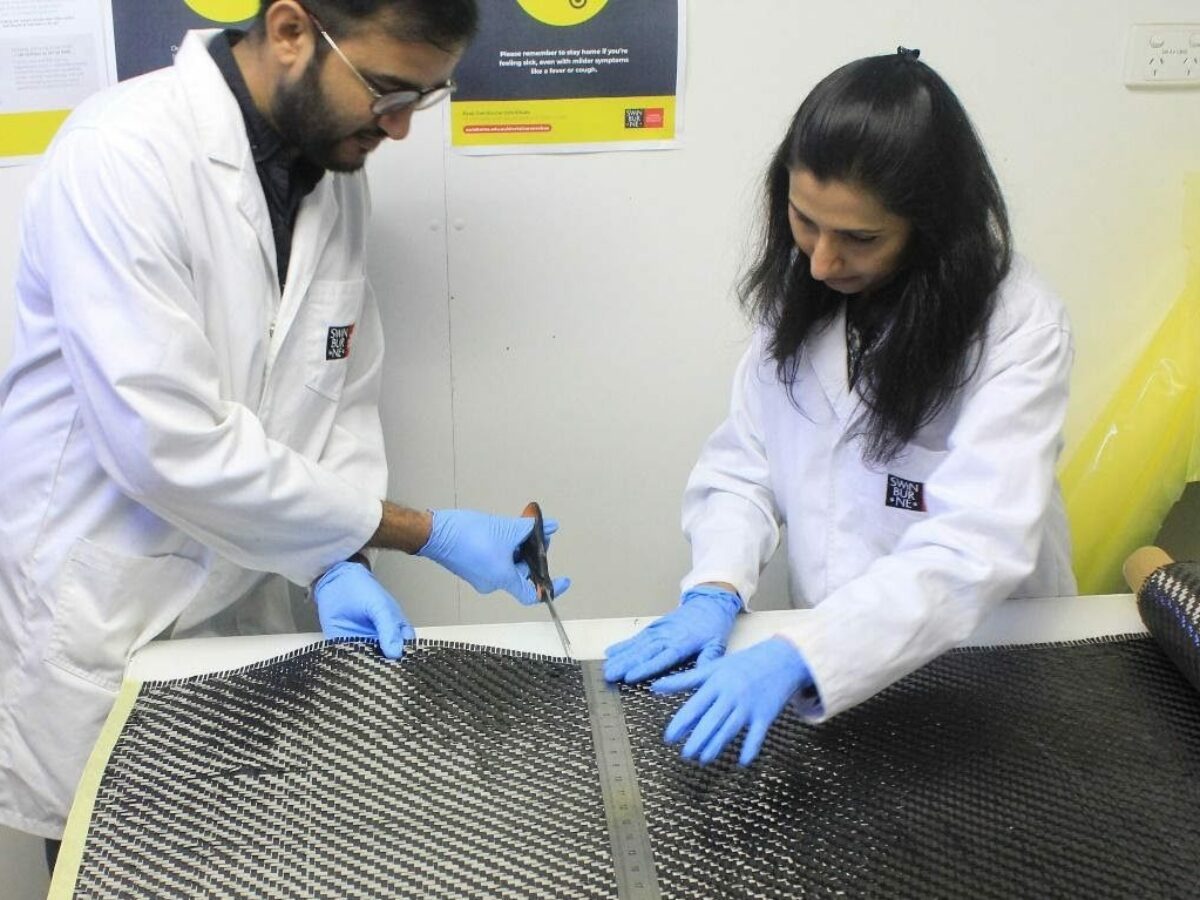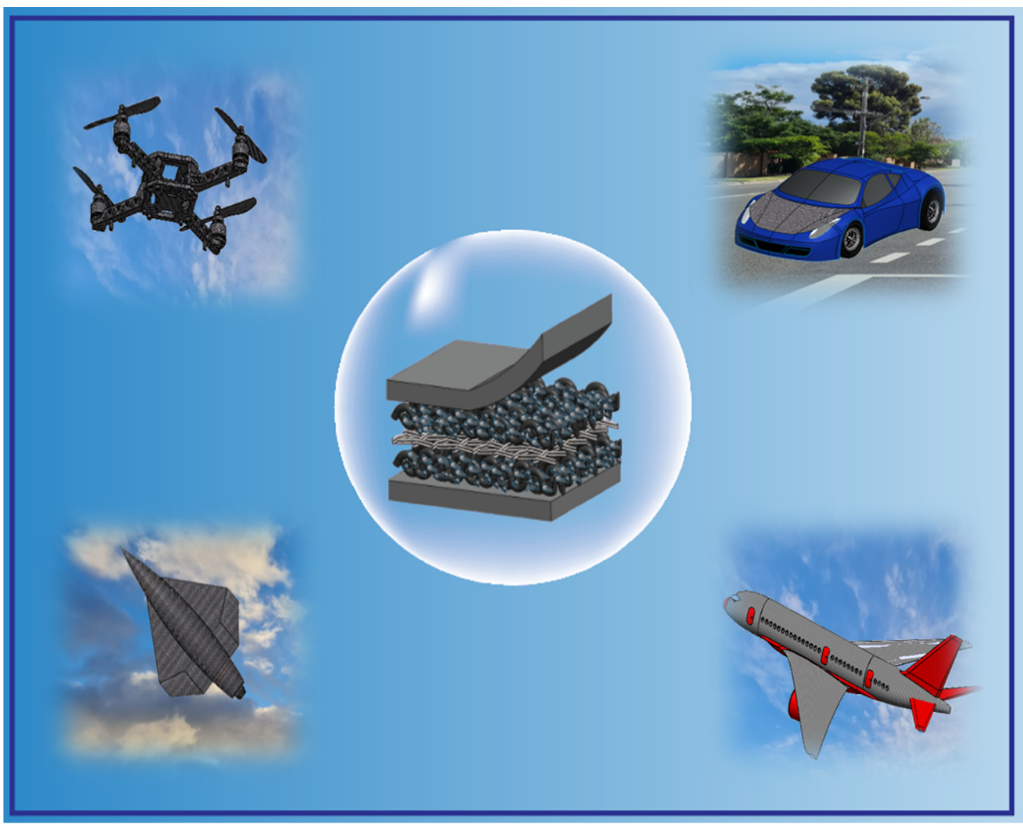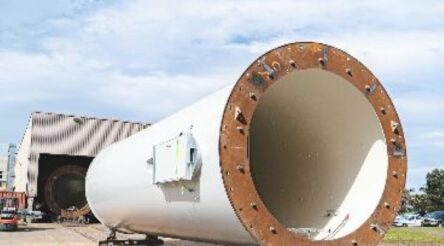Saving through smarter energy use: Structural batteries and supercapacitors for future e-mobility

Today @AuManufacturing’s Saving through smarter energy use series looks at Australian research aimed at enabling structural components to become batteries and supercapacitors. Dr Nisa Salim explains how engineered multifunctional composite materials can be the enablers for future e-mobility and space missions.
The need to develop greener, safer and more sustainable transport systems has been recognised globally as a critical societal, environmental and commercial requisite. The transport sector accounts for 18 per cent of all greenhouse gas emissions in Australia and emissions are growing faster in this sector than in any other. It is predicted that electric vehicles, being a major trend in this, will represent 90 per cent of all cars and light commercial vehicles on Australian roads by 2050. Structural supercapacitors have the potential to have a strong impact on electrification of transport by providing light weight energy storage, be it on the road, water or in air.
As a result of the growth in the electric vehicle market – together with the electrification of urban mobility and unprecedented interest and investments in future electric aircrafts – there is an urgent need to address vehicle light-weighting and energy storage challenges. The approach here is to design and manufacture the lightweight body part of a vehicle as a supercapacitor as opposed more to traditional solutions of distinct battery packs or embedded energy storage systems.
Our recent research demonstrates an innovative approach to create ‘structural batteries and supercapacitors’ that can perform multiple functionalities; both as a lightweight, yet strong body part and as a battery. We developed new methods to enable carbon fibre composites to be structural supercapacitors as an example to achieve multifunctional features with mass, space and energy savings in future transport systems. Generally, supercapacitors consist of two electrodes, an electrolyte and a separator. Likewise, structural supercapacitors are fabricated by arranging modified carbon fibre fabric electrodes, separated by an insulating fabric or polymer membrane, infused with a polymeric electrolyte. Carbon fibre composite materials can simultaneously carry mechanical loads whilst storing (and delivering) electrical energy. However, carbon fibres possess very limited effective surface areas, making them virtually incapable of storing a large amount of electrochemical energy required for practical applications. Achieving a high surface area of the carbon fibre was identified as one of the most critical challenges to realise their potential as electrode materials in electrochemical energy storage. Moreover, conventional methods of carbon fibre activation with corrosive chemical agents, can lead to the degradation of inherent fibre physical characteristics.
 In our research, we create highly conducting nanomaterials by a self-assembly approach and embed them on carbon fibre fabrics to enhance the conductivity as well as surface area (Figure (a)). In very recent research, we fabricated highly interconnected porous graphene and embeded it on the carbon fibre fabrics. Utilising graphene’s unique structure and excellent physical and chemical properties, we have successfully designed a novel, scalable graphene formulation with the potential to create novel carbon fibre composite ‘structural supercapacitors’ with a practical level of mechanical and electrical performance.
In our research, we create highly conducting nanomaterials by a self-assembly approach and embed them on carbon fibre fabrics to enhance the conductivity as well as surface area (Figure (a)). In very recent research, we fabricated highly interconnected porous graphene and embeded it on the carbon fibre fabrics. Utilising graphene’s unique structure and excellent physical and chemical properties, we have successfully designed a novel, scalable graphene formulation with the potential to create novel carbon fibre composite ‘structural supercapacitors’ with a practical level of mechanical and electrical performance.
We established 3D networks between carbon fibres by utilising the interconnected graphene sheets, thereby increasing the electrochemical properties of the CFRPs 500 times more than the neat composites. In our current research, we are further improving the performance of composites to make them useful as high-power sources and, when used in conjunction with batteries, extending the life of power sources for sustainable transport systems.
Compared to internal combustion engines, electric transport is better for our environment with reduced emissions. It also offers huge reductions in traffic noise, a particular concern in our bigger cities. As transportation moves towards alternate fuel vehicles over the next few years, the fleet will become cleaner and greener with a positive impact on the environment. If structural components can become batteries and supercapacitors, we believe we can enable the development of an important class of structural, energy-storing composites for greener and safer mobility.
Structural batteries will be critical to aviation. Electrifying aircrafts with conventional batteries is a massive challenge, considering the amount of power required to take the vehicle off the ground and fly. Structural composites have the potential to solve some of these hurdles in this sector, bringing ‘weight-power’ balance. As such, electric vehicle transportation becomes more feasible, user friendly and affordable, and these materials can make an immediate and deep impact for the Australian manufacturing sector.
Nisa and her team are leading this research at Swinburne and the team use of Swinburne’s Engineering capabilities including state-of-the-art research and development, testing, and prototyping facilities to accelerate the innovation and address the associates challenges.
For the full results and findings, see the full paper, which was published in April 24, 2021 issue of Composite Communications.
Main picture: Karamat Subhani and Nisa Salim
Dr Nisa Salim is currently a Vice Chancellors Initiative Research Fellow at Swinburne University of Technology. She received her PhD from Deakin University in 2013 in materials engineering.
Subscribe to our free @AuManufacturing newsletter here.
@AuManufacturing’s editorial series – Saving through smarter energy use – is brought to you with the support of SMC Corporation.
@aumanufacturing Sections
Analysis and Commentary Awards Defence Manufacturing News Podcast Technology Videos











